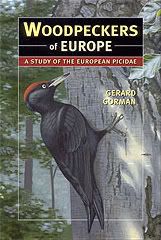The UK newspaper The Guardian ran this interesting story on November 4th, 2008.
Woodpeckers And Hammers
"While others tried to build a better computer or teapot or mousetrap, Julian FV Vincent, Mehmet Necip Sahinkaya and W O'Shea of the department of mechanical engineering at the University of Bath tried to build a better hammer. Unlike most previous hammer smiths, they studied woodpeckers. Why? Because to mechanical engineers, when they are in a certain frame of mind, a woodpecker is nature's finest version of a hammer. The trio published a study called A Woodpecker Hammer in the scholarly journal Proceedings of the Institution of Mechanical Engineers, Part C, Journal of Mechanical Engineering Science.
There they begin with a nod to the Ig Nobel prize-winning research of Dr Ivan Schwab, of the University of California Davis School of Medicine, who in 2002 wrote a monograph that explains why woodpeckers don't get headaches. Schwab was fascinated by the mechanical properties of the woodpecker's head - especially why its brain doesn't homogenise during all that pummelling, and why its eyes don't pop out of their sockets. The Bath scientists take a more holistic approach. They explore how the bird's entire body, from head to toes, feathers included, effectively function as a simple mechanical tool for pounding wood.
Vincent, Sahinkaya and O'Shea examined a green woodpecker (Picus viridis) that was in the terminal state known as "road kill". They measured the remains using old-fashioned methods and also with x-ray equipment, thus determining the values for several parameters: head mass, body mass and the relative lengths of the parts. Using these, and also video of a living, pecking woodpecker of similar size, the scientists estimated the bird's head inertia, body inertia, neck stiffness, neck damping and body spring stiffness. They wrote equations to describe a woodpecker's motions as it moves through all phases of the drum-drum-drum-on-wood cycle. To keep the mathematics fairly simple, there were a few engineering simplifications. The woodpecker's vertebrae and neck tendons together behave as a spring. The tree is, essentially, a stiff spring with a damper.
The study proudly proclaims an intended payoff from this research: "One of the reasons for studying the woodpecker was to derive a design for a lightweight hammer. It was reasoned that the woodpecker is a bird, therefore has to fly and therefore is constructed as light as possible. The mechanism, which has emerged as a result of the model reported here - momentum transfer from body to head of the woodpecker - has been used in the design of a novel hammer [in which a] rotating crank is connected by means of a rod to the casing, so that the motor plus its mounting oscillates about a central pin."
Vincent, Sahinkaya and O'Shea say their original intent was to use this hammer in space exploration, "where it has no net inertia until it comes in contact with an object". But its first use, they confide, probably will be in dentistry."





No comments:
Post a Comment